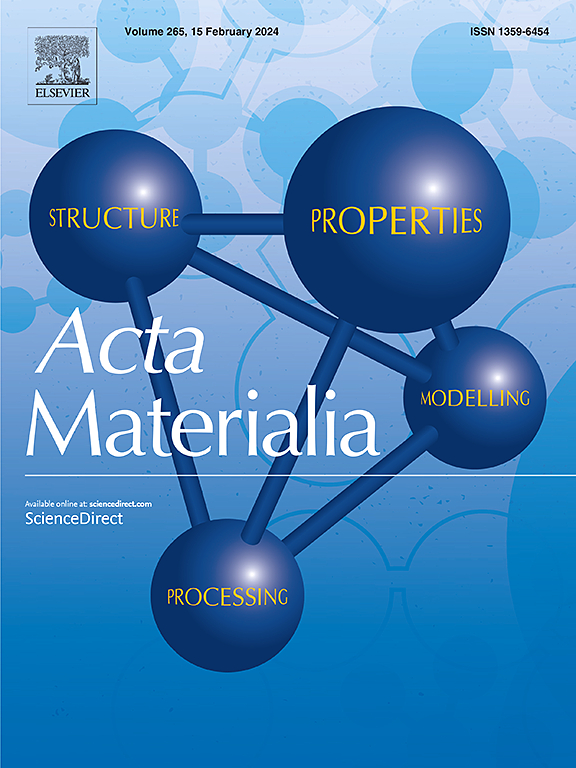Size- and stability-dependent fracture scaling in nanoscale metallic glass
IF 8.3
1区 材料科学
Q1 MATERIALS SCIENCE, MULTIDISCIPLINARY
引用次数: 0
Abstract
Experiments show a significant size effect in the fracture modes of the metallic glass (MG) nanowires, while simulations often diverge due to differences in thermal histories caused by timescale issue of the classical molecular dynamics quenching methods. This leads to disparities between computational and experimental results. To address this, we used a hybrid molecular dynamics (MD) and Monte Carlo thermal cycling method to fabricate well-annealed MG nanowires with effective quenching rates significantly lower than those of MD-prepared samples. Our findings reveal that fracture mode transitions are strongly tied to thermal history. For high quenching rate samples, the fracture mode is only dictated by the aspect ratio (L/D) of nanowires, aligning with existing simulations. For low quenching rate samples, the critical factor determining fracture is the diameter (D), matching experimental observations. This resolves the discrepancies between simulations and experiments on size-dependent fractures in nanoscale MGs. Microscopic analysis links this variation to the intrinsic plastic zone width (δ0), influenced by the aspect ratio in high rates but correlated solely with diameter in low rates. We propose a universal model for fracture scaling with size and thermal stability in nanostructured MGs.


纳米金属玻璃中与尺寸和稳定性相关的断裂结垢
实验结果表明,金属玻璃(MG)纳米线的断裂模式存在显著的尺寸效应,但由于经典分子动力学淬火方法的时间尺度问题导致热历史的差异,模拟结果往往存在分歧。这导致了计算结果和实验结果之间的差异。为了解决这个问题,我们使用混合分子动力学(MD)和蒙特卡罗热循环方法制备了退火良好的MG纳米线,其有效淬火速率明显低于MD制备的样品。我们的研究结果表明,断裂模式的转变与热历史密切相关。对于高淬火速率样品,断裂模式仅由纳米线的长径比(L/D)决定,与现有模拟结果一致。对于低淬火速率样品,决定断裂的关键因素是直径(D),与实验观察相符。这解决了纳米级mg中尺寸相关裂缝的模拟和实验之间的差异。显微分析将这种变化与本征塑性区宽度(δ0)联系起来,在高速率下受长宽比的影响,但在低速率下仅与直径相关。我们提出了一个通用的模型,用于研究纳米结构mgs中裂缝的尺寸和热稳定性
本文章由计算机程序翻译,如有差异,请以英文原文为准。
求助全文
约1分钟内获得全文
求助全文
来源期刊

Acta Materialia
工程技术-材料科学:综合
CiteScore
16.10
自引率
8.50%
发文量
801
审稿时长
53 days
期刊介绍:
Acta Materialia serves as a platform for publishing full-length, original papers and commissioned overviews that contribute to a profound understanding of the correlation between the processing, structure, and properties of inorganic materials. The journal seeks papers with high impact potential or those that significantly propel the field forward. The scope includes the atomic and molecular arrangements, chemical and electronic structures, and microstructure of materials, focusing on their mechanical or functional behavior across all length scales, including nanostructures.
 求助内容:
求助内容: 应助结果提醒方式:
应助结果提醒方式:


